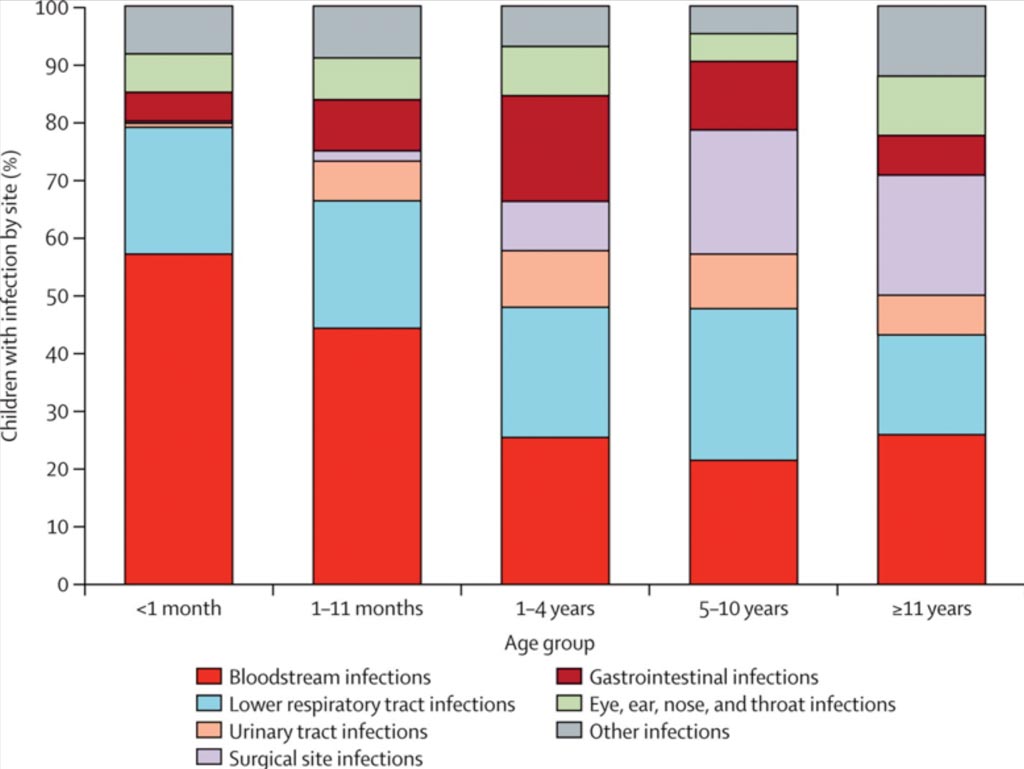Pediatric HAIs Are the Most Common Type
By LabMedica International staff writers
Posted on 26 Jan 2017
The prevalence and type of health care-associated infections (HAIs) in children in Europe and risk factors for infection in this population has been described in a multinational study.Posted on 26 Jan 2017
Point-prevalence surveys offer an alternative method to incidence surveillance to estimate the hospital-wide burden of health-care-associated infections within a reasonable budget. Thus, they can be used a wider range of settings including institutes with limited resources and allow broader comparison of rates across a wider range of socio-cultural contexts.

Image: Distribution of health-care-associated infections in children, by age group (Photo courtesy of the European Centre for Disease Prevention and Control).
A large group of scientists associated with the European Centre for Disease Prevention and Control (ECDC) analyzed data from the ECDC point prevalence survey of HAIs and antimicrobial use in European acute care hospitals 2011-2012, and included 770 infections reported in 726 children and adolescents. The findings show that the prevalence of infections was highest in pediatric intensive care units where one in six children were infected (15.5%) and neonatal intensive care units, where one in ten babies (10.7%) where infected. Most HAIs (77%) were identified in infants younger than 12 months.
Bloodstream infections were the most common type of infection (45%), followed by lower respiratory tract infections (22%). Although the vast majority of bloodstream infections in the study were reported in infants younger than 12 months, the proportion remained high in other age groups as well. This type of infections in neonates and children are associated with a high mortality and long-term adverse neurological outcomes. The team reported 392 microorganisms in 342 (44%) of the 770 health-care-associated infections; 343 (88%) were bacteria, 28 (7%) fungi, and 21 (5%) viruses. Enterobacteriaceae were the most commonly isolated microorganisms (113 [15%]), followed by coagulase-negative staphylococci and Staphylococcus aureus. Of the few reported viruses, rotaviruses were the most frequently identified (13 of 21 isolates).
The authors stated that a pan-European programme is urgently required to prevent and reduce the unacceptably high rates of HAIs in children in Europe, with a focus in neonatal and pediatric intensive care units and addressing the issues related to healthcare-associated bloodstream infections. The study was published on January 13, 2017, in the journal The Lancet Infectious Diseases.














